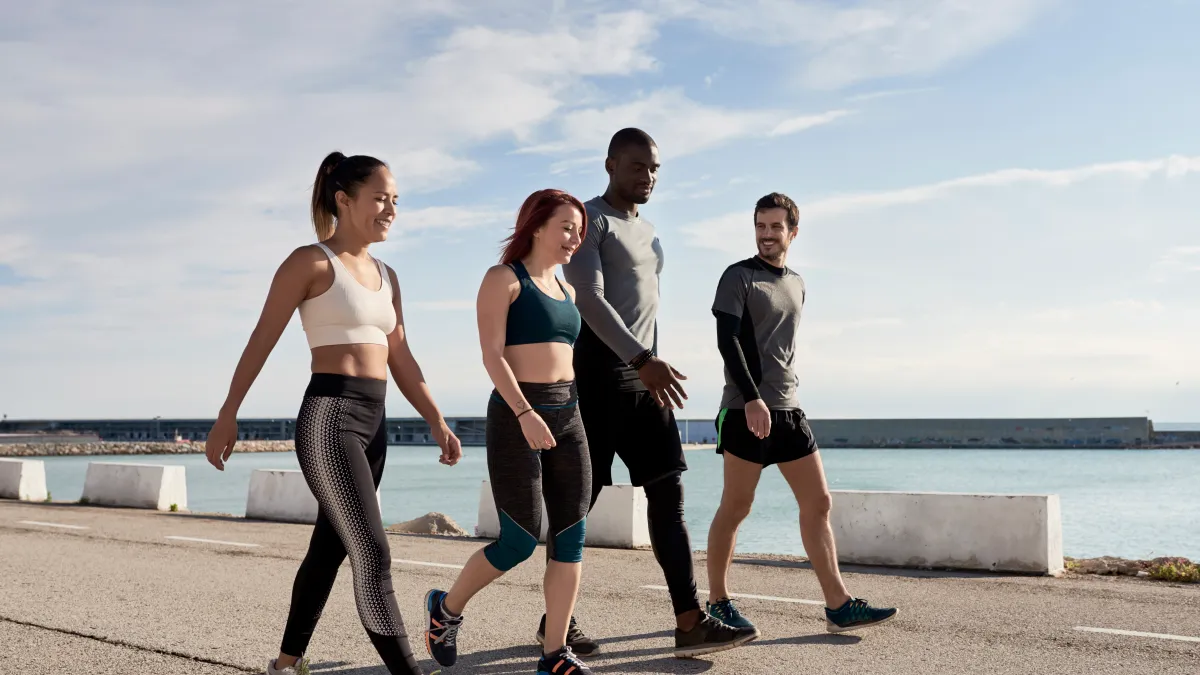Copyright NBC 5 Chicago

Few would disagree that cardio, also called aerobic exercise, is good for your health. Of the 10 most common chronic diseases, seven are "favorably influenced by regular physical activity," according to the Physical Activity Guidelines for Americans compiled by the Department of Health and Human Services. However, 80% of adults are not meeting necessary exercise recommendations, the HHS adds. While fitting exercise into your schedule will have benefits no matter what, depending on your goals, it’s also worth considering the kind of cardio you do and the pace at which you do it, experts say. If fat loss is what you’re after, a kind of cardiovascular workout categorized as zone 2 is your best bet, Katherine Sickler, personal trainer and certified strength and conditioning specialist, tells TODAY.com. Zone 2 cardio is determined by how intense your workout is and your heart rate, Sickler explains. And it turns out taking things slow may have more benefits than you know. While confirming your workout is hitting zone 2 typically requires specialized tools, the experts have a few tips when it comes to making sure you’re in the right zone for fat burning. What is zone 2 cardio? Zone 2 cardio is one of five cardio zones that vary in intensity. These zones are divided by heart rate — or how fast your heart is pumping to keep up with the exercise you’re doing, Sickler explains. Zone 2 includes moderate-intensity exercise, meaning your heart rate will be between 60-70% of its maximum heart rate, which is optimal for burning fat. Zone 1, on the other hand, includes low-intensity exercise at 50-60% of your max heart rate. Zone 3 is moderate-to-high intensity at 70-80% of your max heart rate. Zone 4 is high intensity, using 80-90% of your max heart rate. And zone 5 is very intense exercise at 90-100% of your max heart rate. What is the best zone 2 exercise? A brisk walk is a popular and accessible way to get into zone 2 cardio and burn fat, says Sickler. Additionally, walking offers a host of other benefits, including improved cardiovascular health and blood pressure, and increased metabolism and blood sugar control, TODAY.com previously reported. Zone 2 cardio, however, is all about the intensity of your workout, not the workout itself. If walking is not your preferred form of exercise, you’ve got plenty of other options to get your heart rate in the zone 2 range, such as cycling, running, swimming or climbing steps, says Sickler. For the most health benefits, the Physical Activity Guidelines for Americans recommend adults complete 150-300 minutes a week of moderate-intensity exercise, which includes zone 2 cardio. If you’re a beginner, it's best to slowly work your way up to this range, says Dr. Marc S. Eisenberg, associate professor and cardiologist at Columbia University Medical Center/NewYork-Presbyterian Hospital. He adds that the buzz about zone 2 cardio and its benefits are great motivators to exercise, especially for those who are new to the gym. And for those with medical conditions that make high-intensity exercise risky, zone 2 cardio is often the sweet spot. “I think these zones are motivating people to get in great shape without putting themselves at risk and actually feeling better,” Eisenberg tells TODAY.com. Is zone 2 cardio good for fat loss? Yes, zone 2 cardio relies on fat for fuel. Exercising at 60-70% of your max heart rate will prompt your body to pull energy from its fat stores to keep you going, Sickler explains. The harder you go, the more fat you’ll burn, but only to a point, she clarifies. Once you start exercising at a much higher intensity and creep into the higher cardio zones, your body will burn carbohydrates, rather than fat, for fuel. How do you know if you’re in zone 2? This is where things can get tricky, says Sickler. Specialized tools to measure lactate levels in blood are the most accurate way to know if you're in zone 2, but they usually aren’t at your local gym. So instead, she offers the following tips to tell if you're in zone 2: First, calculate your max safe heart rate by subtracting your age from 220. For example, a 35-year-old’s max safe heart rate would is 185 beats per minute (bpm). Then calculate your zone 2 heart rate range: A 35-year-old is in zone 2 at 50-60% of their max safe heart rate, so between 111-129.5 bpm. To measure your heart rate during exercise, you might use a wearable heart rate monitor or one attached to the workout machine you're using. While these are not always totally accurate, they are among the most accessible options, Sickler notes. If you want to avoid numbers altogether, Sickler says another way to check whether you’re in zone 2 is to talk to yourself. “The way I describe this to my clients is (zone 2 exercise is the kind) where you could maybe talk,” she explains. While talking in zone 2 may feel strained, “it’s not so intense that you can’t carry on a conversation.” During zone 2 cardio, “you’re still going to be able to listen to a podcast and actually understand and comprehend what’s going on in the podcast,” Sickler adds. How long should a zone 2 cardio workout last? Sickler recommends walking briskly on a treadmill at a slight incline for 30-45 minutes a few times per week. The steady pace of the treadmill will help you stay within the zone 2 heart rate range, she adds. If that’s too daunting, work your way up to longer durations, says Eisenberg. “I tell people, start with 10 minutes a day, and if 10 minutes is easy, go up to 14 minutes. And if 14 minutes is easy, go to 20 minutes,” he says. You’ll notice progress in about three to four weeks. That’s when “they realize they could do 26 minutes, as opposed to the initial 10 minutes, and feel better. So that is a great motivator for people when they know they can last longer,” Eisenberg adds. As you get fitter and find yourself able to exercise for longer amounts of time, your heart rate may change too. “As you keep exercising, your heart rate is going to get lower and lower, which is not dangerous,” Eisenberg notes. “It’s actually a sign that you’re in good shape or well-conditioned.” So, he recommends using the zone 2 heart rate range to inspire you to get active but notes you won’t always need to rely on it. This story first appeared on TODAY.com. More from TODAY:



